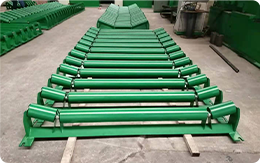 Afrikaans
Afrikaans  Albanian
Albanian  Amharic
Amharic  Arabic
Arabic  Armenian
Armenian  Azerbaijani
Azerbaijani  Basque
Basque  Belarusian
Belarusian  Bengali
Bengali  Bosnian
Bosnian  Bulgarian
Bulgarian  Catalan
Catalan  Cebuano
Cebuano  Corsican
Corsican  Croatian
Croatian  Czech
Czech  Danish
Danish  Dutch
Dutch  English
English  Esperanto
Esperanto  Estonian
Estonian  Finnish
Finnish  French
French  Frisian
Frisian  Galician
Galician  Georgian
Georgian  German
German  Greek
Greek  Gujarati
Gujarati  Haitian Creole
Haitian Creole  hausa
hausa  hawaiian
hawaiian  Hebrew
Hebrew  Hindi
Hindi  Miao
Miao  Hungarian
Hungarian  Icelandic
Icelandic  igbo
igbo  Indonesian
Indonesian  irish
irish  Italian
Italian  Japanese
Japanese  Javanese
Javanese  Kannada
Kannada  kazakh
kazakh  Khmer
Khmer  Rwandese
Rwandese  Korean
Korean  Kurdish
Kurdish  Kyrgyz
Kyrgyz  Lao
Lao  Latin
Latin  Latvian
Latvian  Lithuanian
Lithuanian  Luxembourgish
Luxembourgish  Macedonian
Macedonian  Malgashi
Malgashi  Malay
Malay  Malayalam
Malayalam  Maltese
Maltese  Maori
Maori  Marathi
Marathi  Mongolian
Mongolian  Myanmar
Myanmar  Nepali
Nepali  Norwegian
Norwegian  Norwegian
Norwegian  Occitan
Occitan  Pashto
Pashto  Persian
Persian  Polish
Polish  Portuguese
Portuguese  Punjabi
Punjabi  Romanian
Romanian  Russian
Russian  Samoan
Samoan  Scottish Gaelic
Scottish Gaelic  Serbian
Serbian  Sesotho
Sesotho  Shona
Shona  Sindhi
Sindhi  Sinhala
Sinhala  Slovak
Slovak  Slovenian
Slovenian  Somali
Somali  Spanish
Spanish  Sundanese
Sundanese  Swahili
Swahili  Swedish
Swedish  Tagalog
Tagalog  Tajik
Tajik  Tamil
Tamil  Tatar
Tatar  Telugu
Telugu  Thai
Thai  Turkish
Turkish  Turkmen
Turkmen  Ukrainian
Ukrainian  Urdu
Urdu  Uighur
Uighur  Uzbek
Uzbek  Vietnamese
Vietnamese  Welsh
Welsh  Bantu
Bantu  Yiddish
Yiddish  Yoruba
Yoruba  Zulu
Zulu head pulley tail pulley
Understanding Head Pulleys and Tail Pulleys in Conveyor Systems
Pulleys are an integral component of conveyor systems, playing a crucial role in the transportation of materials across various industries. Among the different types of pulleys, head pulleys and tail pulleys serve distinct yet complementary functions, and understanding their operation can enhance the efficiency and reliability of conveyor systems.
Head Pulley Explained
The head pulley, often referred to as the drive pulley, is positioned at the discharge end of a conveyor system. It is responsible for driving the belt and ensuring that materials are moved effectively from one location to another. This pulley is typically connected to a motor, which provides the necessary power to turn it. As the head pulley rotates, it pulls the conveyor belt forward, allowing materials to be transported along the belt’s surface.
The design of the head pulley is crucial for its function. It is usually equipped with a specific surface to enhance traction. Common materials for head pulleys include steel or rubber, which aid in preventing slippage and ensure that the belt adheres properly, especially when carrying heavy loads. The angle of the head pulley also matters; it must be positioned correctly to optimize material flow and minimize wear and tear on the belt.
Tail Pulley Functionality
On the opposite end of the conveyor system lies the tail pulley. The tail pulley is crucial for supporting the belt as it comes off the head pulley and returns to its starting position. While it does not drive the conveyor, it plays an essential role in the overall operation by maintaining belt tension and alignment.
head pulley tail pulley

The tail pulley is designed to keep the belt taut, which prevents sagging and ensures smooth operation. This is vital because a properly tensioned belt reduces the risk of damage and increases the lifespan of both the belt and the system. Additionally, tail pulleys may also have features such as an adjustable tensioning mechanism to fine-tune the tension according to the system's needs.
The Interplay Between Head and Tail Pulleys
The interaction between head and tail pulleys is vital for the efficient functioning of a conveyor system. If either pulley is misaligned or malfunctioning, it can lead to significant operational issues. For instance, if the head pulley is not driving the belt effectively, materials may not be transported efficiently, leading to bottlenecks in production, while an improperly aligned tail pulley can cause excessive wear on the belt, leading to costly repairs.
Furthermore, the combination of these pulleys contributes to the overall efficiency and reliability of the conveyor system. Regular maintenance and inspections of both head and tail pulleys are essential to ensure they function smoothly. Keeping these components in optimal condition not only enhances performance but also extends the life of the conveyor system as a whole.
Conclusion
In conclusion, understanding the roles of head pulleys and tail pulleys is essential for anyone involved in the operation or maintenance of conveyor systems. By ensuring these components are functioning correctly and are well-maintained, businesses can achieve efficient material handling, reduce downtime, and improve overall productivity. Investing time and resources into the maintenance of these pulleys can yield significant benefits, creating a more effective operational environment in various industries.
-
Revolutionizing Conveyor Reliability with Advanced Rubber Lagging PulleysNewsJul.22,2025
-
Powering Precision and Durability with Expert Manufacturers of Conveyor ComponentsNewsJul.22,2025
-
Optimizing Conveyor Systems with Advanced Conveyor AccessoriesNewsJul.22,2025
-
Maximize Conveyor Efficiency with Quality Conveyor Idler PulleysNewsJul.22,2025
-
Future-Proof Your Conveyor System with High-Performance Polyurethane RollerNewsJul.22,2025
-
Driving Efficiency Forward with Quality Idlers and RollersNewsJul.22,2025





























